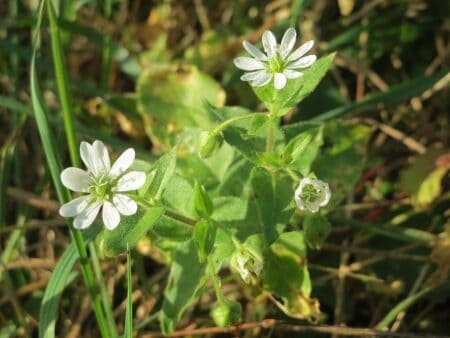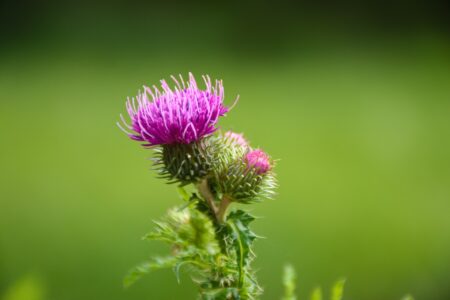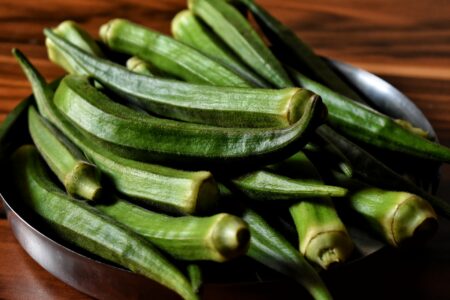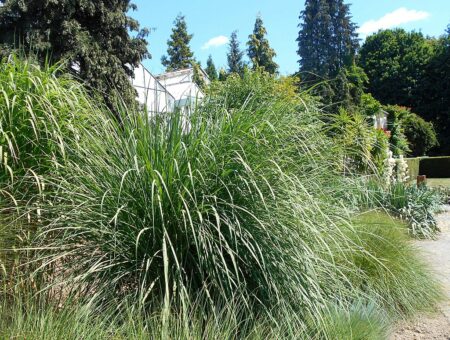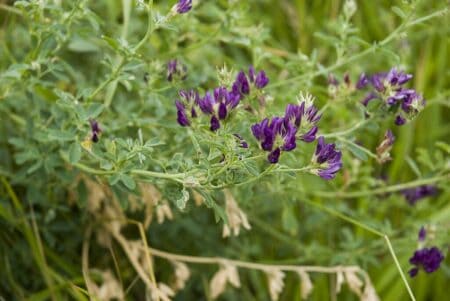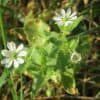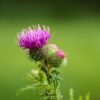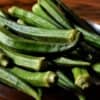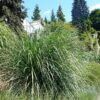Thistles are a pesky and persistent type of weed that can quickly overtake gardens and lawns.
Several varieties of thistles are common in North America and can be difficult to identify.
So, in this guide, we will go over some of the most widespread and problematic thistle weeds.
By distinguishing between these invasive plants, you’ll be better equipped to keep your yard thistle-free using the proper control methods for each type.
- What Are Thistle Weeds?
- Different Types of Thistle Weeds
- Type #1: Canada Thistle (Cirsium arvense)
- Type #2: Spear Thistle (Cirsium vulgare)
- Type #3: Musk Thistle (Carduus nutans)
- Type #4: Italian Thistle (Carduus pycnocephalus)
- Type #5: Scotch Thistle (Onopordum acanthium)
- Type #6: Blessed Milk Thistle (Silybum marianum)
- Type #7: Creeping Thistle (Cirsium arvense)
- Type #8: Plumeless Thistle (Carduus acanthoides)
- Conclusion
What Are Thistle Weeds?
Thistle weeds are a group of flowering plants belonging to the Asteraceae family, including daisies, sunflowers, and asters.
Thistles are known for their prickly leaves, spiny stems, and distinctive flower heads composed of multiple small florets.
These plants have adapted to various habitats and can be found in multiple regions worldwide.
Thistle weeds can be annual or biennial, meaning they complete their life cycle in one or two years.
Some thistles, however, are perennials, returning year after year from their root systems.
The lifecycle of thistle weeds involves germination, growth, flowering, seed production, and dispersal.
These plants often have an aggressive growth habit and can reproduce through copious amounts of seeds dispersed by wind, animals, or human activities.
This reproductive strategy contributes to their ability to spread rapidly and colonize new areas.
While some thistle species have value in terms of cultural, medicinal, or ecological uses, many are considered invasive and noxious weeds.
Invasive thistles can outcompete native plant species, disrupt ecosystems, and reduce the availability of resources for livestock and wildlife.
They can also impact agricultural productivity by reducing crop yields and increasing management costs.
Managing thistle weeds involves a combination of strategies, including mechanical control (such as mowing or tilling), biological control (introducing natural enemies), and chemical control (using herbicides).
Early detection and prevention are crucial to manage thistle populations and prevent their spread effectively.
Different Types of Thistle Weeds
Thistles are among the most persistent and hard-to-eradicate weeds homeowners face.
Their deep roots and prickly nature allow them to flourish without check. It is important to identify the specific thistle threatening your yard correctly.
The following covers some of the most widespread varieties, distinguishing traits, and effective control methods.
Type #1: Canada Thistle (Cirsium arvense)

Canada Thistle is a perennial weed known for its spear-like leaves and distinctive purple flowers.
It spreads through an extensive root system and can quickly colonize large land areas, making it a troublesome weed in agricultural settings.
Type #2: Spear Thistle (Cirsium vulgare)

Spear or Bull Thistle is recognizable by its stiff, branching stems reaching several feet tall.
Pink to purple flower heads bloom at the end of stem branches.
The stems and undersides of leaves are sharply spined, enabling easy identification.
As a biennial, it sends up tall stalks with flower buds the second year before dying out.
Type #3: Musk Thistle (Carduus nutans)
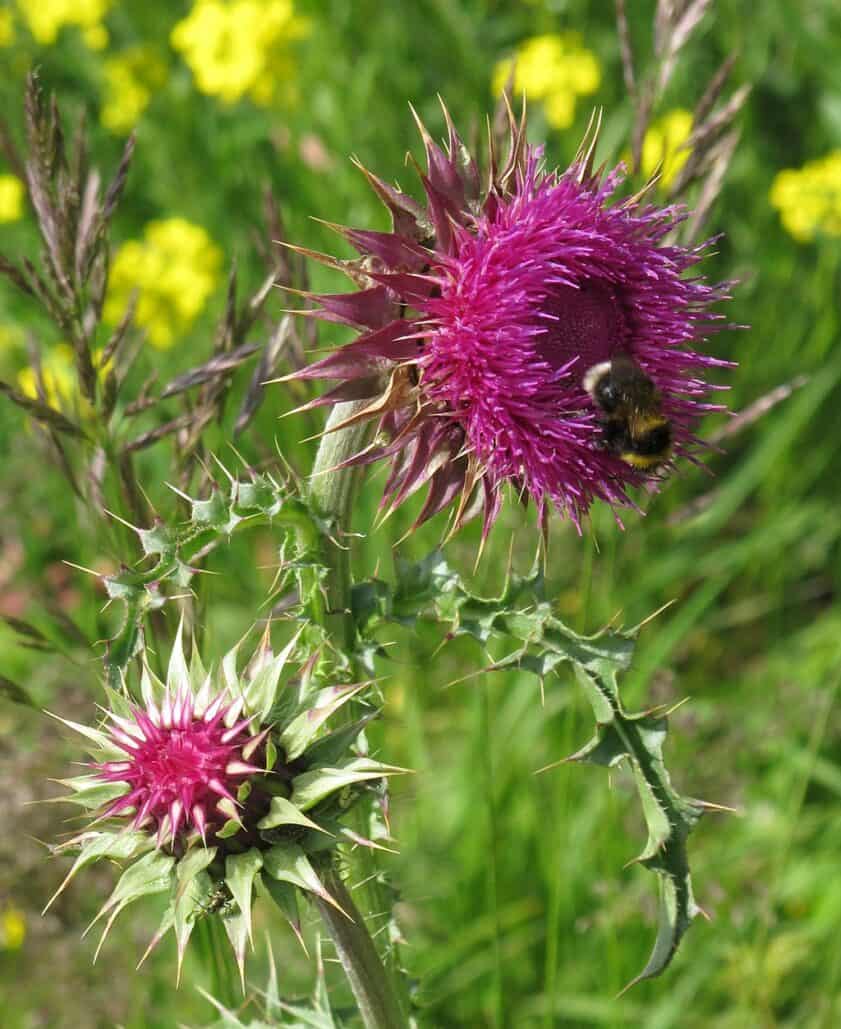
Commonly known as Nodding Thistle, Musk Thistle gets its name from its drooping flower heads that nod on long stems.
Pink to reddish-purple blooms emerge in summer.
Deeply lobed, dark green leaves have spiny wings and edges.
It spreads vigorously via windblown seeds and creeping rootstock.
Type #4: Italian Thistle (Carduus pycnocephalus)
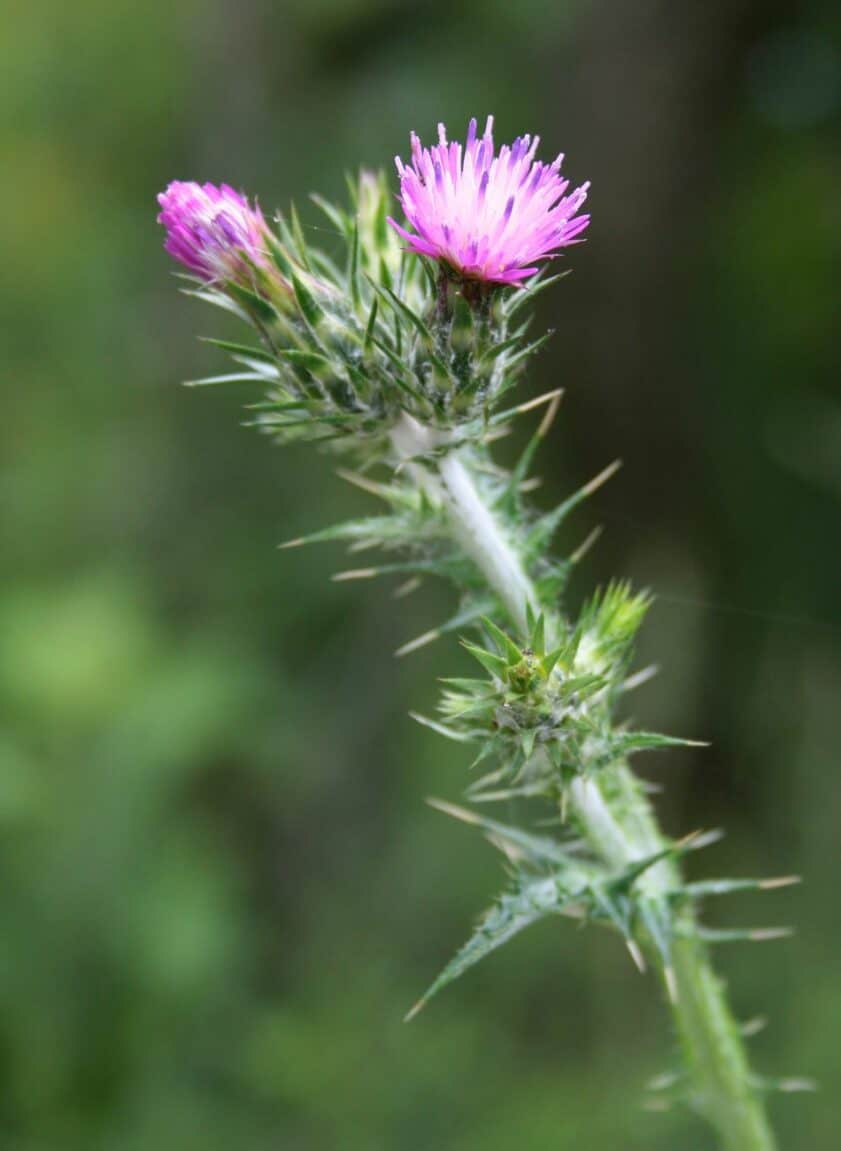
Italian Thistle, also called Slender Thistle, is distinguished by thin, spiny, pale green stems and narrow lobes on its leaves.
Small pinkish-purple flowers form tight cylindrical clusters.
It spreads quickly from seeds and underground roots.
This invasive annual thistle is often found in disturbed areas.
Still, it can invade lawns, gardens, and pastures if not controlled early in its life cycle.
Type #5: Scotch Thistle (Onopordum acanthium)

Scotch Thistle stands out with very large spear-shaped leaves with a wooly underside and spiny waxy coating.
Towering stalks support dense spherical flower heads of small reddish-purple blooms.
As a biennial, it forms a rosette the first year before a stout flowering stem bolts upwards the next.
Type #6: Blessed Milk Thistle (Silybum marianum)
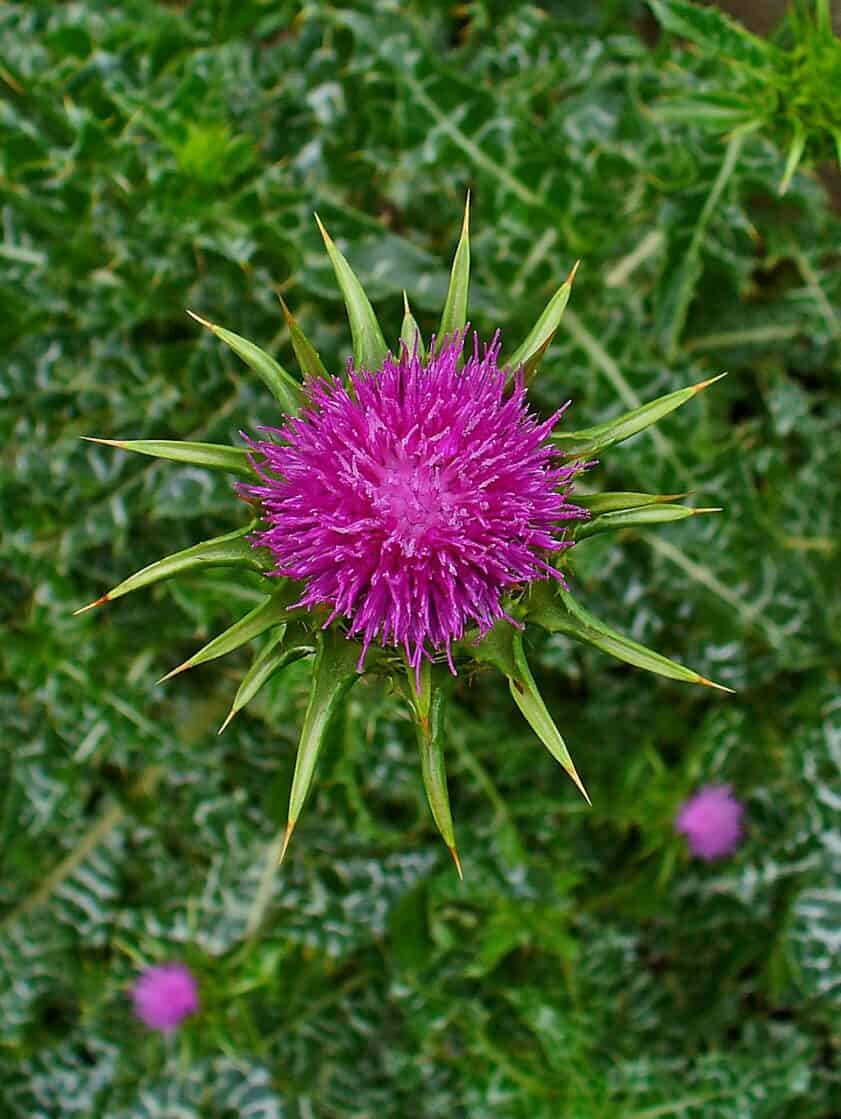
Also known as Mary Thistle, this annual weed produces large whitish flowers with reddish veins and spines.
Leaves are deeply lobed with prickly edges, grayish-green above and lighter below.
While not as widespread as other varieties, it can still compete with crops.
All parts are technically edible, and some use its seeds for perceived wellness benefits, but it remains an uninvited garden guest.
Some pioneer settlers harvested plumes from Canadian thistles to substitute for down in mattresses and pillows.
Type #7: Creeping Thistle (Cirsium arvense)
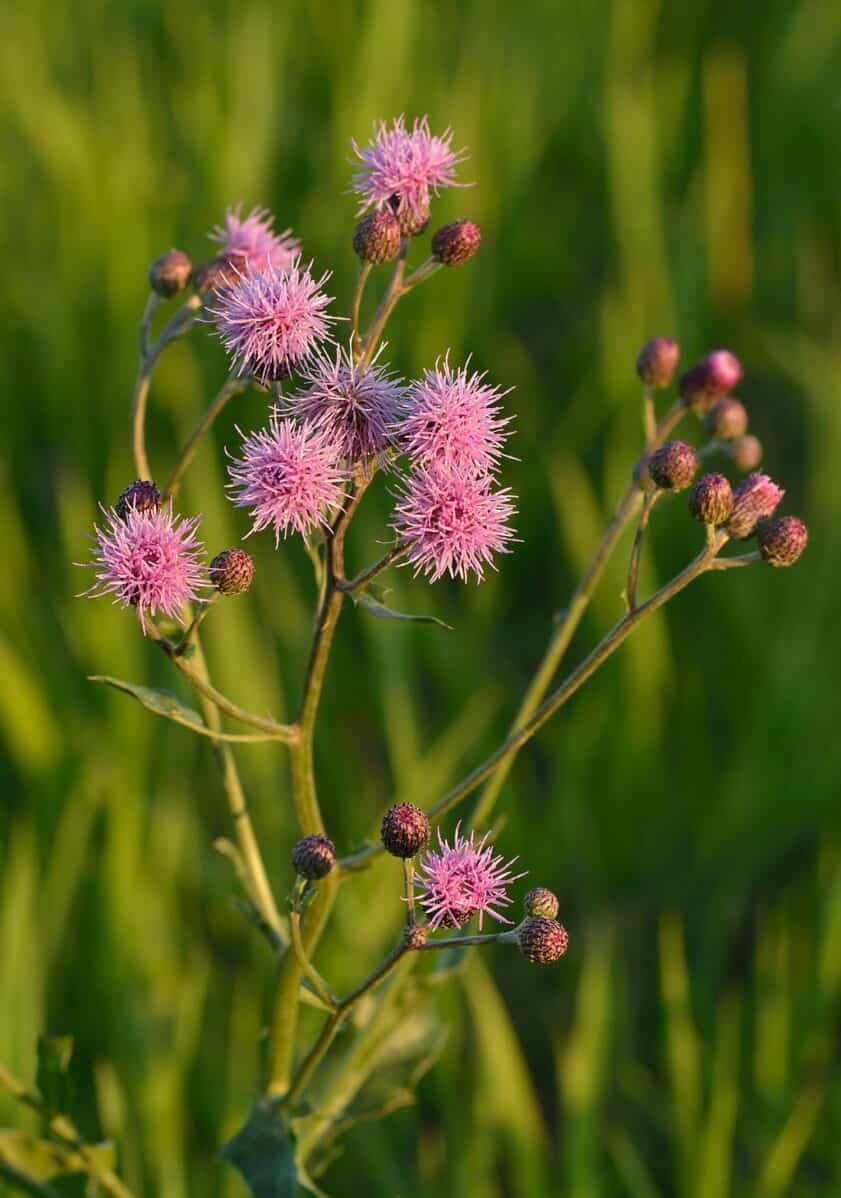
Creeping Thistle lives up to its name by aggressively spreading laterally via underground rhizomes and creeping rootstalks.
Perennial and deeply rooted, it effectively chokes out other vegetation and re-sprouts when cut.
Highly adaptive, it thrives in many soil and climate conditions.
Type #8: Plumeless Thistle (Carduus acanthoides)

A biennial Eurasian invader, Plumeless Thistle stems grow stiffly upright with spiny wings.
Its basal and cauline leaves are deeply lobed and sharply spun.
Small pinkish flowers bloom in looser clusters than Bull Thistle and lack any plumes above.
Conclusion
Though thistles can sometimes appear invincible, a commitment to correctly identifying the specific threats and applying targeted control measures will serve you well.
Every plant eliminated moves you closer to the peaceful garden of your visions. Stay determined in your efforts against these invasive weeds.
Wishing you many rewarding seasons of thistle-free enjoyment ahead!


